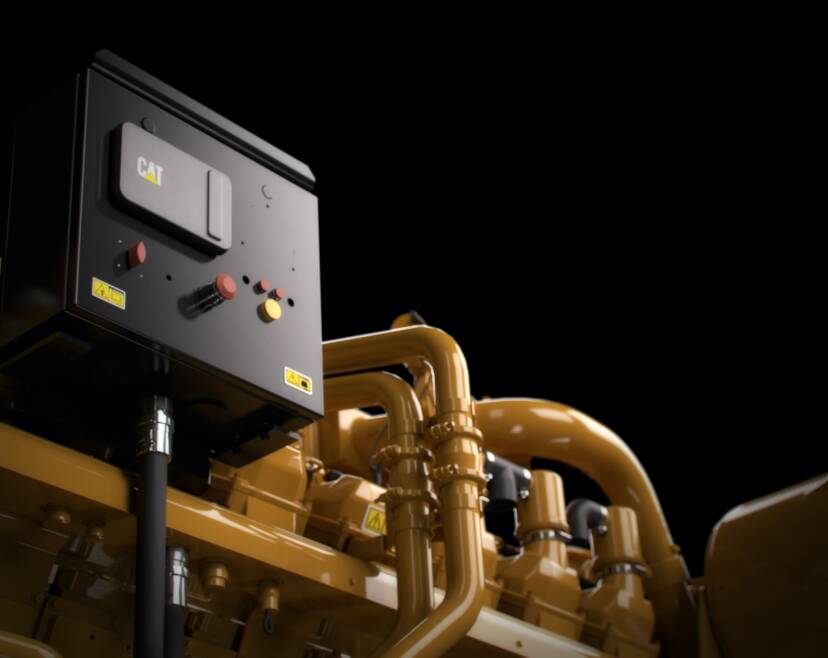

Remote Assistance,
the future of technical support?
Pilot project Pon Power gets a big push due to corona





Current status
The system is now in a pilot phase among a select group of customers. This pilot will last until this summer. With a positive pilot and business case, it would be possible to introduce the service after the summer. But, Visser hastens to say: “It is really not entirely certain that Remote Assistance will come. We see many opportunities and added value, but also plenty of challenges that we need to find an answer to. For example, how we implement this new service, which software we need, how we best meet the customer’s needs, what kind of malfunctions are eligible for Remote Assistance, etc. It's not done and dusted yet.” To be continued, Motorennieuws will keep you informed.
Marten Jan Visser is a Cat Connect Manager at Pon Power. In this capacity, he is responsible for the development of Caterpillar’s digital propositions and is involved in innovative technology services developed by Pon Power. He says: “As Pon Power, we maintain our own service equipment to provide customers with technical support. One of the ways to do this in the future is via Remote Assistance, an experimental new service that Pon Power is developing and researching.”
Innovation is always high on the agenda at Pon Power. But recent developments in connection with COVID-19 have only further strengthened the importance of a forward-looking way of working. For example, now that Pon Power engineers are limited in their ability to travel due to the measures, innovative solutions for remote working are gaining momentum. One of the pilot projects that have been given higher priority due to the global pandemic is Remote Assistance. Motorennieuws investigated.

Direct contact
Remote Assistance is a service where an expert Pon Power engineer remotely contacts the crew on board to solve a problem. It is a way to speak directly with people on board without anyone else in-between and to look over their shoulder on board and to assist in resolving an acute problem.
Visser says: “We are currently testing using a special dedicated application that has been developed for these types of purposes. This application has specific functionalities for providing remote support, comparable to well-known applications such as Teams Meet and Zoom. We can also share information in this application. For example, the engineer can share documents or make notes in the video image. The device on which this works is a smartphone, tablet or laptop. Augmented reality glasses may also be possible in the future.”
Complex
Such systems already exist but this experimental Remote Assistance is more complex than it might seem at first glance. After all, this concerns work on vessels, and they are certainly not always moored under a Wi-Fi mast. Visser says: “Digital bandwidth is indeed quite a challenge. The service must be as widely available as possible, including very remote locations or in the middle of the sea. The Internet connection therefore runs via satellite and that connection does not always hold. However, even if we have satellite coverage, it can still be difficult for this signal to get through to the engine room, which is often located deep in the vessel. So for this system, we have to use software and formats that consume as little bandwidth as possible.”
The development team chose to drop certain functionalities and prioritise speech in case of very little bandwidth. The user also has the choice of just sending images or communicating via chat. The application therefore offers flexibility as to how the bandwidth is used.


Remote Assistance,
the future of technical support?
Pilot project Pon Power gets a big push due to corona

Innovation is always high on the agenda at Pon Power. But recent developments in connection with COVID-19 have only further strengthened the importance of a forward-looking way of working. For example, now that Pon Power engineers are limited in their ability to travel due to the measures, innovative solutions for remote working are gaining momentum. One of the pilot projects that have been given higher priority due to the global pandemic is Remote Assistance. Motorennieuws investigated.
Marten Jan Visser is a Cat Connect Manager at Pon Power. In this capacity, he is responsible for the development of Caterpillar’s digital propositions and is involved in innovative technology services developed by Pon Power. He says: “As Pon Power, we maintain our own service equipment to provide customers with technical support. One of the ways to do this in the future is via Remote Assistance, an experimental new service that Pon Power is developing and researching.”

Direct contact
Remote Assistance is a service where an expert Pon Power engineer remotely contacts the crew on board to solve a problem. It is a way to speak directly with people on board without anyone else in-between and to look over their shoulder on board and to assist in resolving an acute problem.
Visser says: “We are currently testing using a special dedicated application that has been developed for these types of purposes. This application has specific functionalities for providing remote support, comparable to well-known applications such as Teams Meet and Zoom. We can also share information in this application. For example, the engineer can share documents or make notes in the video image. The device on which this works is a smartphone, tablet or laptop. Augmented reality glasses may also be possible in the future.”

Complex
Such systems already exist but this experimental Remote Assistance is more complex than it might seem at first glance. After all, this concerns work on vessels, and they are certainly not always moored under a Wi-Fi mast. Visser says: “Digital bandwidth is indeed quite a challenge. The service must be as widely available as possible, including very remote locations or in the middle of the sea. The Internet connection therefore runs via satellite and that connection does not always hold. However, even if we have satellite coverage, it can still be difficult for this signal to get through to the engine room, which is often located deep in the vessel. So for this system, we have to use software and formats that consume as little bandwidth as possible.”
The development team chose to drop certain functionalities and prioritise speech in case of very little bandwidth. The user also has the choice of just sending images or communicating via chat. The application therefore offers flexibility as to how the bandwidth is used.

Current status
The system is now in a pilot phase among a select group of customers. This pilot will last until this summer. With a positive pilot and business case, it would be possible to introduce the service after the summer. But, Visser hastens to say: “It is really not entirely certain that Remote Assistance will come. We see many opportunities and added value, but also plenty of challenges that we need to find an answer to. For example, how we implement this new service, which software we need, how we best meet the customer’s needs, what kind of malfunctions are eligible for Remote Assistance, etc. It's not done and dusted yet.” To be continued, Motorennieuws will keep you informed.







